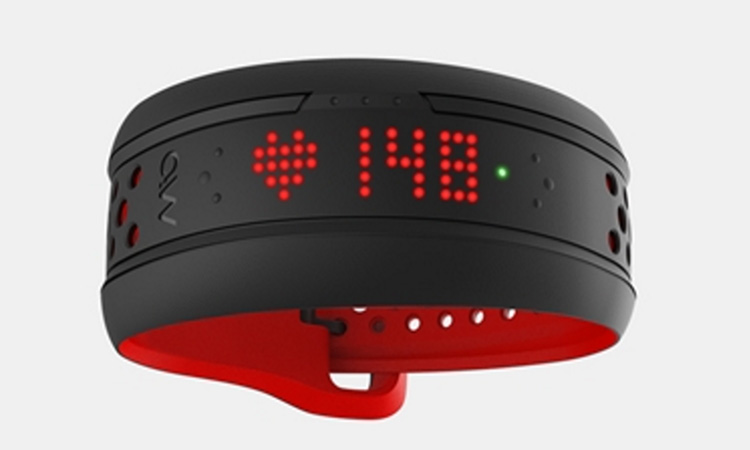Tom's Guide Verdict
This sporty wristband features a bright display and an accurate heart rate monitor, but it lacks features found on similarly priced fitness trackers.
Pros
- +
Accurate optical heart rate monitor
- +
Comfortable design
- +
Good battery life.
Cons
- -
Doesn't track sleep
- -
No alarm functions
- -
No smartphone notifications.
Why you can trust Tom's Guide
Sitting between its $79 Link and $200 Alpha 2, Mio's Fuse fitness tracker combines a little of each of those two devices. Like its more- and less-expensive brethren, the $149 Fuse has an optical heart rate sensor. Unlike the Link, the Fuse has a display, but one that's more basic than the LCD panel on the Alpha 2. Is the Fuse the just-right tracker for fitness buffs?
Design
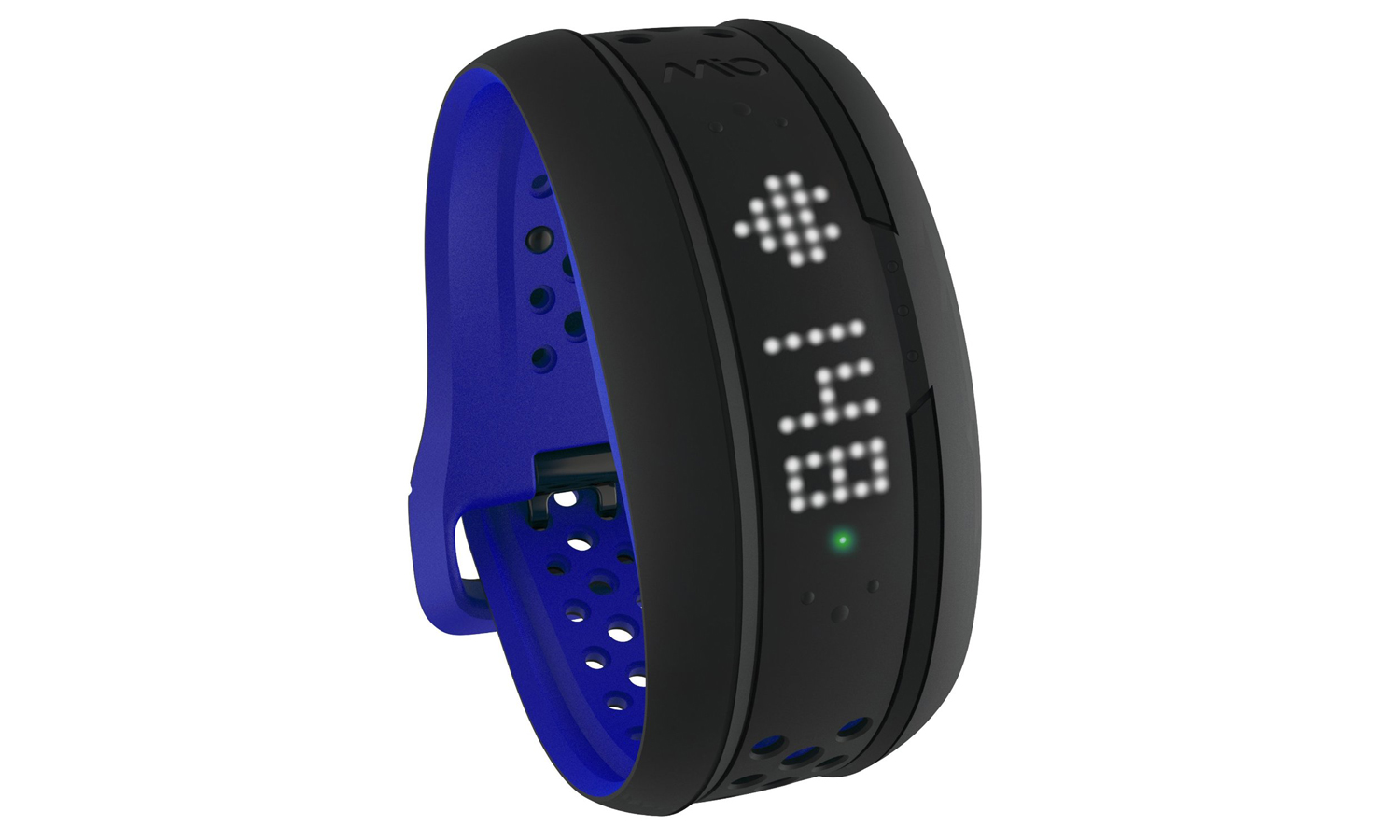
There's no mistaking that the Mio Fuse is a fitness-first device. Unlike other all-day activity trackers, which are meant to blend in with whatever you're wearing, the Fuse has a sporty look that is more at home at the gym than anywhere else.
The model I tested was black on the top with red underneath, and the band itself had a series of perforations running its length. (Mio also sells a blue-and-black model, as well as a version for smaller wrists that has an aqua-colored underside.) Best of all: The Fuse has a fairly traditional clasp, which makes putting it on and taking it off much easier than, for example, the Jawbone Up3, whose clasp requires some deft fingerwork to close.
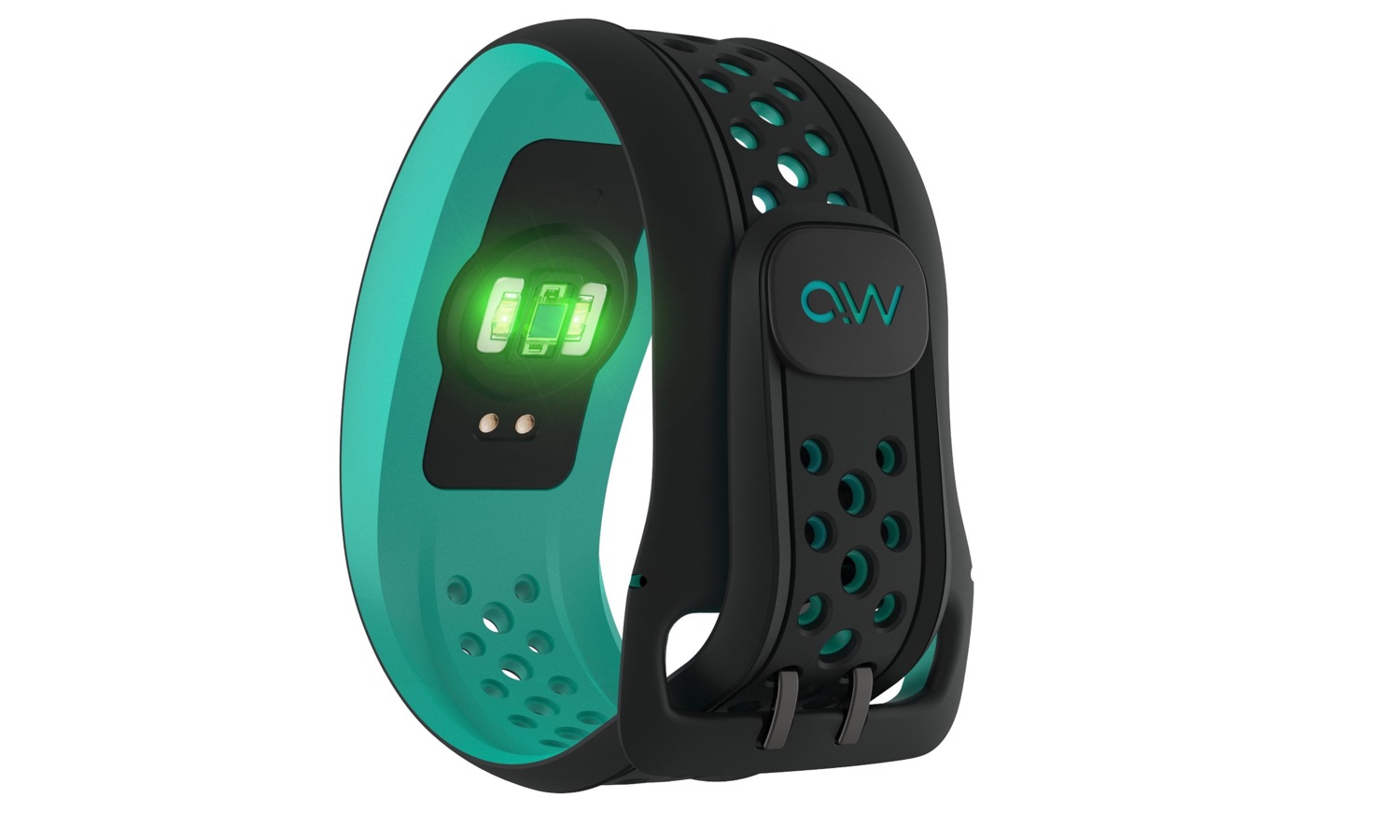
The Fuse's display remains indistinguishable from the rest of the band until you press one of three buttons. When you press one of the buttons, a number of red LEDs illuminate briefly to show you the time, your distance or other metric, such as steps or heart rate.
Heart Rate Monitor
Mio was one of the first companies to develop a wrist-mounted optical heart rate sensor, and its technology has been licensed by a number of different companies, including TomTom and Garmin. It's no surprise, then, that the Fuse's heart rate sensor performed excellently.
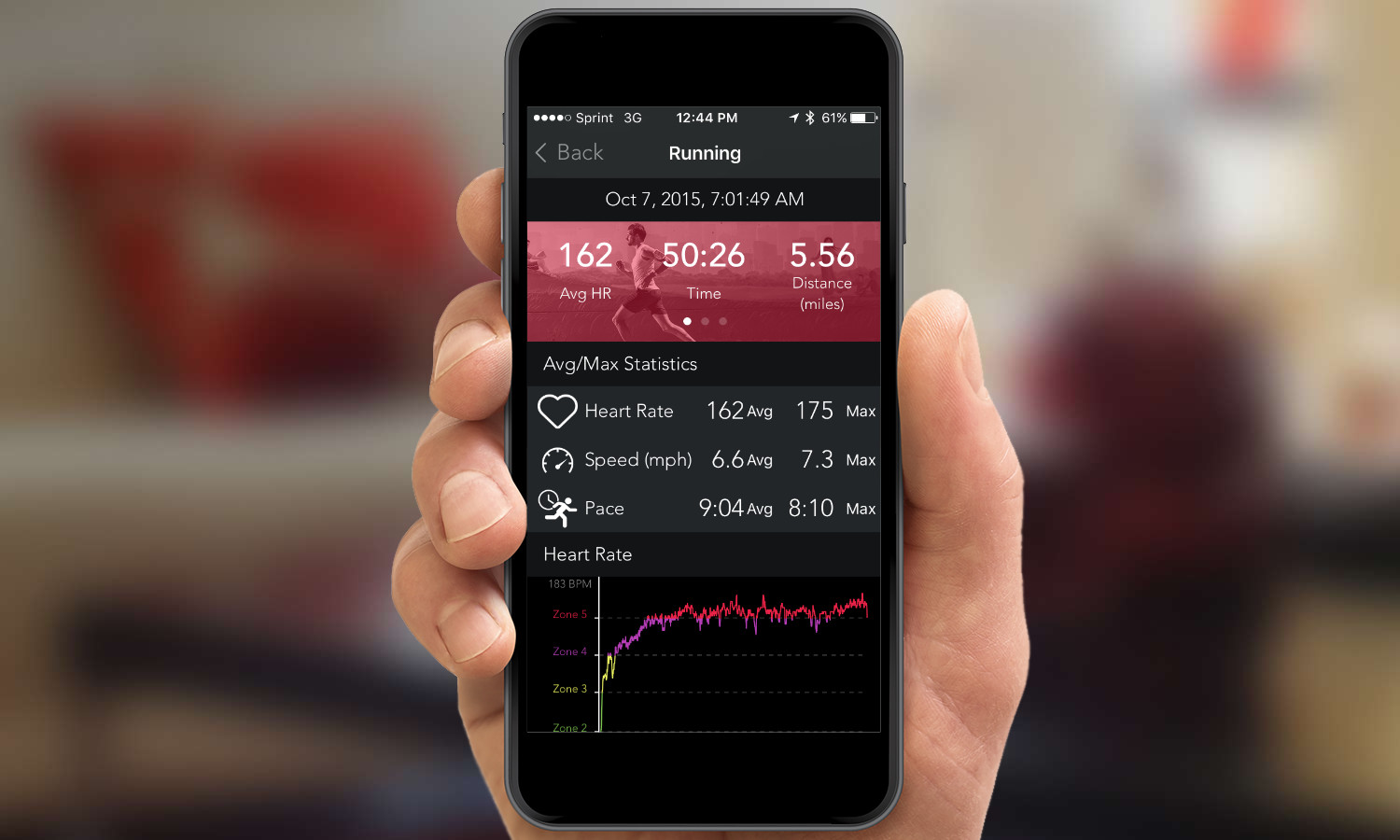
One nice touch with Mio's device is that, through the app, you can customize your heart rate zones depending on your level of fitness. For example, more seasoned athletes will want to set a higher threshold for aerobic activity than someone who's just getting off the couch. And, while you're in the middle of a workout, the Fuse will vibrate, and an LED will change color, when you go from one zone to the next.
Performance
Navigating the Fuse using its three touch buttons is fairly easy, but it's worth reading the instructions that come with the fitness tracker. The two side buttons let you scroll among Time, Calories, Steps, Distance and Goal. A third button above the display can start the Fuse's heart rate monitor and begin tracking an activity. Press and hold the button for 3 seconds, and the band will activate the heart rate monitor; it usually took about 10 to 15 seconds to acquire my pulse.
After the Fuse finds your pulse, if you press the button again briefly, the Fuse will start tracking your activity. Hold the button for about a second to pause, and then tap and hold it for another second to end the activity. However, because the screen goes dark after a few seconds, you have to tap the button for it to light up again. It seems straightforward, but it took me more than a few taps and presses to remember what to do while I was in the middle of a run.
MORE: Best Fitness Trackers
The Mio Fuse uses a three-axis accelerometer to gauge how far you move during the day. While it may be good to get a general sense of how far you go, it was not very accurate at measuring precise distances. Twice, I took it for a 6-mile run as measured by my Garmin Forerunner 225 watch, which uses GPS to calculate distance. The Fuse estimated that both runs were just 5.5 miles.
Fortunately, the Fuse's heart rate monitor proved much more accurate; it was rarely more than a beat or two off from the always-accurate Forerunner 225.
App
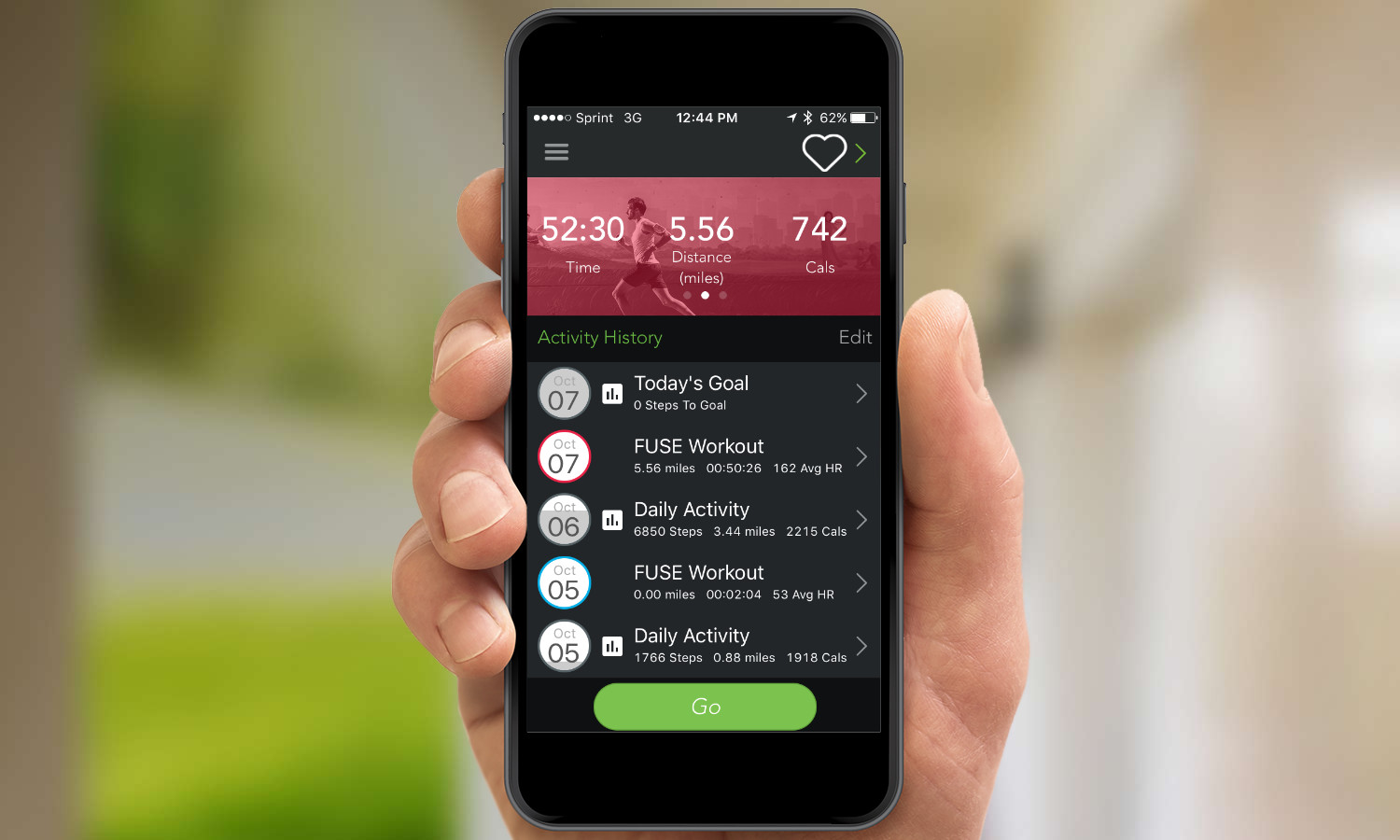
The Mio Go app (available for Android and iOS) shows on its home page a summary of your four most recent activities and your goal for the day. You can scroll down the page for additional workouts and reports.
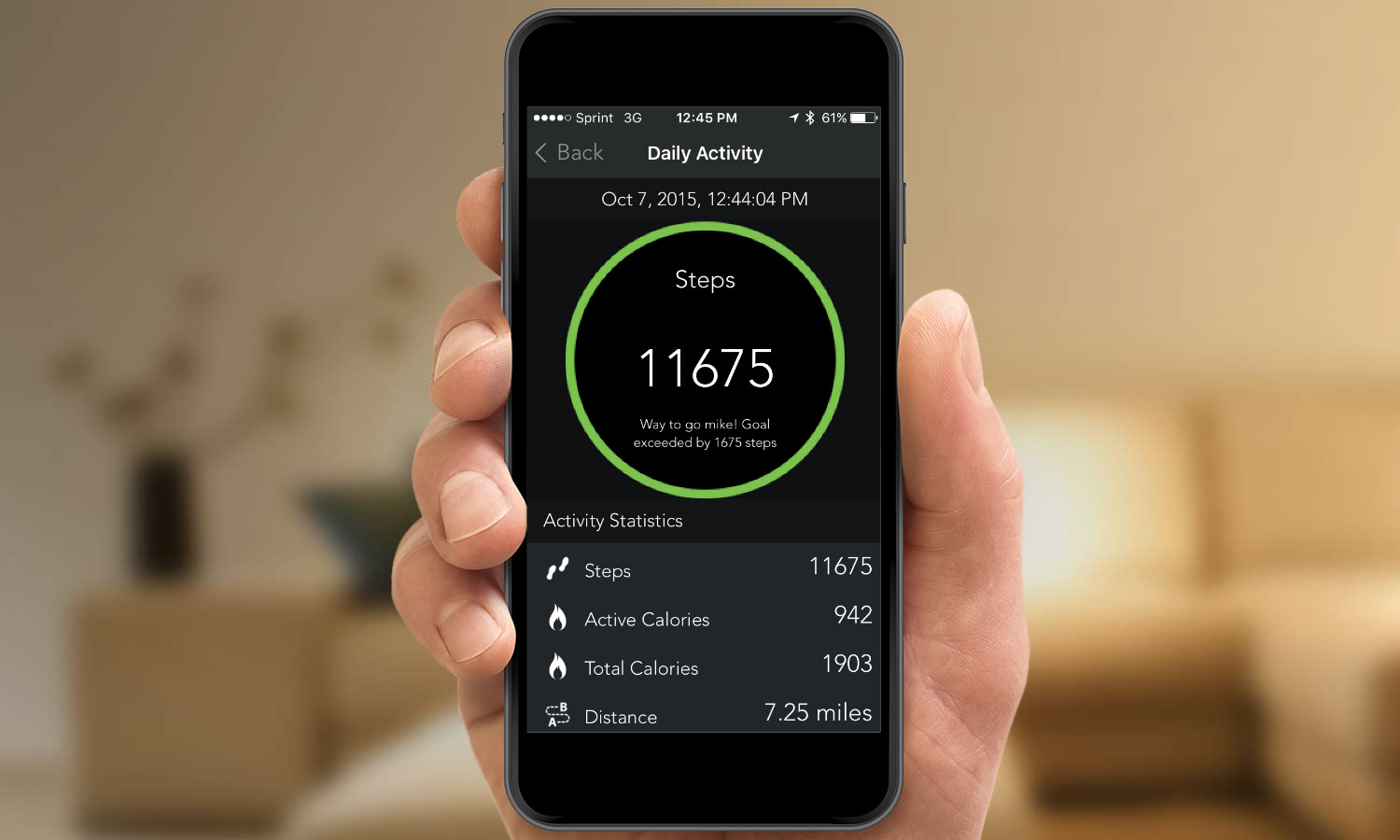
Clicking on a particular activity brings you to a screen showing additional information about that event. For example, a summary of one of my runs showed my average and max heart rate, speed, pace, distance and time. At the bottom of this page, a graph displayed my heart rate over the duration of the run. I liked that the app color-coded my various heart rate zones, but I couldn't dive deeper into the chart and see what my heart rate was at a given moment.
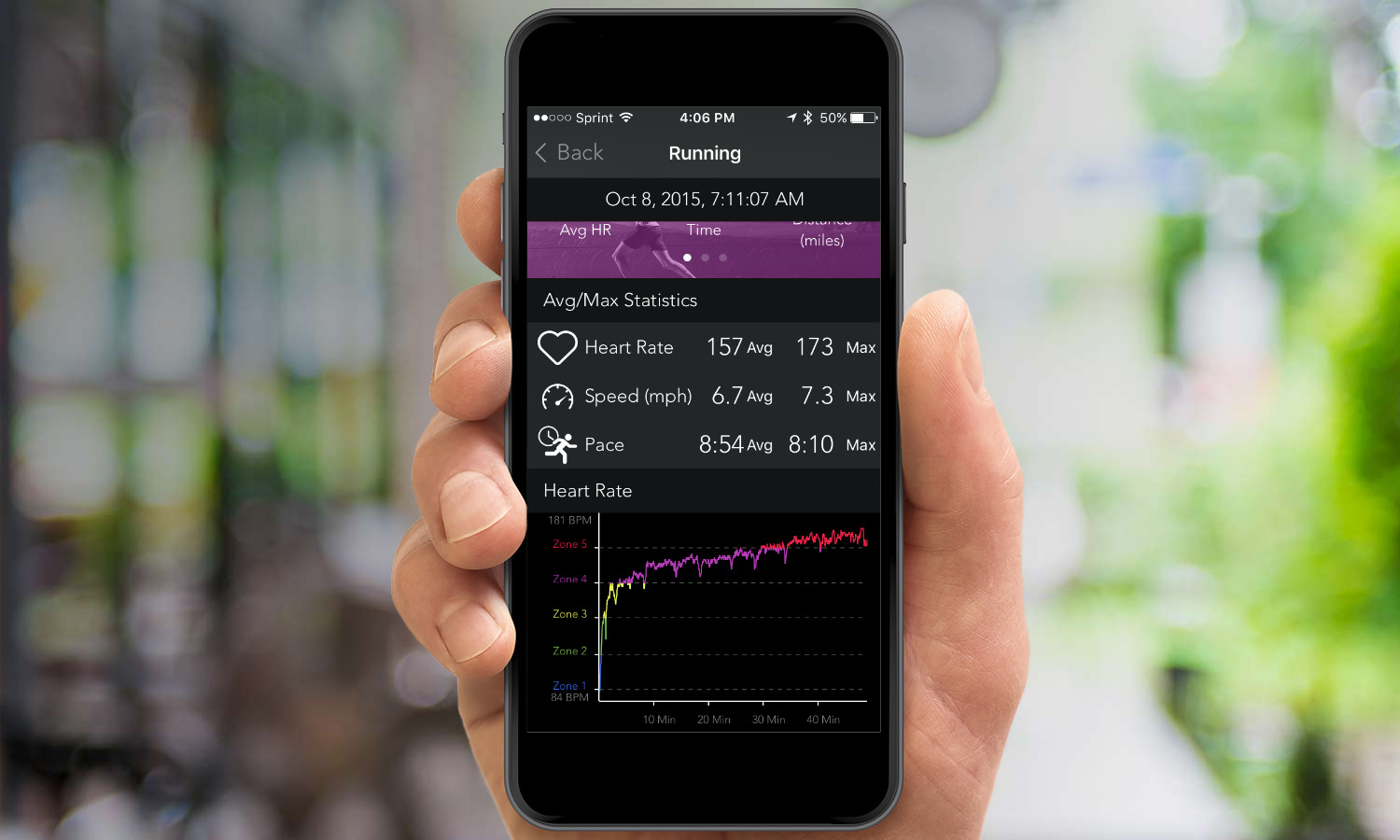
The app lets you customize options, such as your heart rate zones, which screens appear when you're working out, and on which arm you wear the Fuse.
Compared to other fitness apps, though, Mio Go is rather limited. There's no diet tracking, and there's no way to share information from Mio Go to other apps, such as MapMyFitness or Runkeeper (the lone exception is Apple HealthKit). Fortunately, if you want to skip using the Mio Go app entirely, you can simply pair the Fuse with a wide variety of fitness apps, such as the aforementioned ones.
Battery Life
Mio says the Fuse should last up to two weeks on a charge with regular use, and I found that claim to be accurate. That's about twice as long as you'll get from the Fitbit Charge HR. The Fuse recharges via a proprietary magnetic USB dongle, whose connection to the band is rather tenuous.
MORE: How to Choose the Right Fitness Tracker for Your Needs
Bottom Line
The Mio Fuse does everything it's meant to do fairly well; it was comfortable to wear and accurately tracked my heart rate. Its biggest fault is its poor distance tracking. So why doesn't it get a higher rating? Because it does far less than other fitness trackers that cost the same. The $149 Fitbit Charge HR, for example, can also track your sleep, wake you up and deliver some notifications from your watch. It was also more accurate when measuring my steps, too. The Mio Fuse is great at keeping track of your ticker, but it takes more than heart to win in this field.

Michael A. Prospero is the U.S. Editor-in-Chief for Tom’s Guide. He oversees all evergreen content and oversees the Homes, Smart Home, and Fitness/Wearables categories for the site. In his spare time, he also tests out the latest drones, electric scooters, and smart home gadgets, such as video doorbells. Before his tenure at Tom's Guide, he was the Reviews Editor for Laptop Magazine, a reporter at Fast Company, the Times of Trenton, and, many eons back, an intern at George magazine. He received his undergraduate degree from Boston College, where he worked on the campus newspaper The Heights, and then attended the Columbia University school of Journalism. When he’s not testing out the latest running watch, electric scooter, or skiing or training for a marathon, he’s probably using the latest sous vide machine, smoker, or pizza oven, to the delight — or chagrin — of his family.
